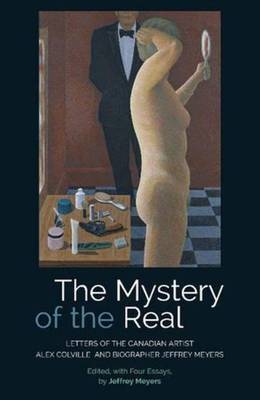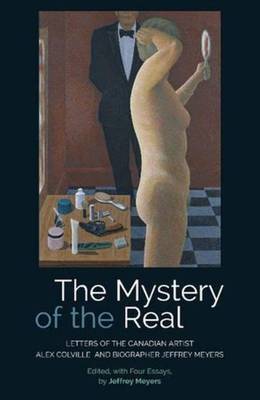
- Afhalen na 1 uur in een winkel met voorraad
- Gratis thuislevering in België vanaf € 30
- Ruim aanbod met 7 miljoen producten
- Afhalen na 1 uur in een winkel met voorraad
- Gratis thuislevering in België vanaf € 30
- Ruim aanbod met 7 miljoen producten
Zoeken
The Mystery of the Real
Letters of the Canadian Artist Alex Colville and Biographer Jeffrey Meyers
Jeffrey Meyers
Paperback | Engels
€ 45,45
+ 90 punten
Omschrijving
The work of Alex Colville, O.C. (1920-2013), one of the great modern realist painters, combines the Flemish detail of Andrew Wyeth, the eerie foreboding of George Tooker and the anguished confrontations of Lucian Freud. Behind the North Americans stands their common master, Edward Hopper. Colville's works are in many museums in Canada and Germany. He has affinities with Max Beckmann and appeals to the German "secondary virtues" cleanliness, punctuality, love of order. In a long life he resolutely opposed the fashionable currents of abstract and expressionistic art. In contrast to Jackson Pollock's wild action painting, Colville created paintings of contemplation and reflection. As Jeffrey Meyers writes: I spent several days with Colville on each of three visits from California to Wolfville. I received seventy letters from him between August 1998 and April 2010, and kept thirty-six of my letters to him. He sent me photographs and slides of his work and, in his eighties, discussed the progress and meaning of the paintings he completed during the last decade of his life. His handwritten letters, precisely explaining his thoughts and feelings, provide a rare and enlightening opportunity to compare my insights and interpretations with his own intentions and ideas. He also discussed his family, health, sexuality, politics, reading, travels, literary interests, our mutual friend Iris Murdoch, response to my writing, his work, exhibitions, sales of his pictures and of course the meaning of his art. His letters reveal the challenges he faced during aging and illness, and his determination to keep painting as health difficulties mounted. He stopped writing to me when he became seriously ill two years before his death. In this context the late paintings, presented in colour in this book, take on a new poignancy.
Specificaties
Betrokkenen
- Auteur(s):
- Uitgeverij:
Inhoud
- Aantal bladzijden:
- 224
- Taal:
- Engels
Eigenschappen
- Productcode (EAN):
- 9781845198114
- Verschijningsdatum:
- 14/06/2016
- Uitvoering:
- Paperback
- Formaat:
- Trade paperback (VS)
- Afmetingen:
- 152 mm x 226 mm
- Gewicht:
- 340 g

Alleen bij Standaard Boekhandel
+ 90 punten op je klantenkaart van Standaard Boekhandel
Beoordelingen
We publiceren alleen reviews die voldoen aan de voorwaarden voor reviews. Bekijk onze voorwaarden voor reviews.











